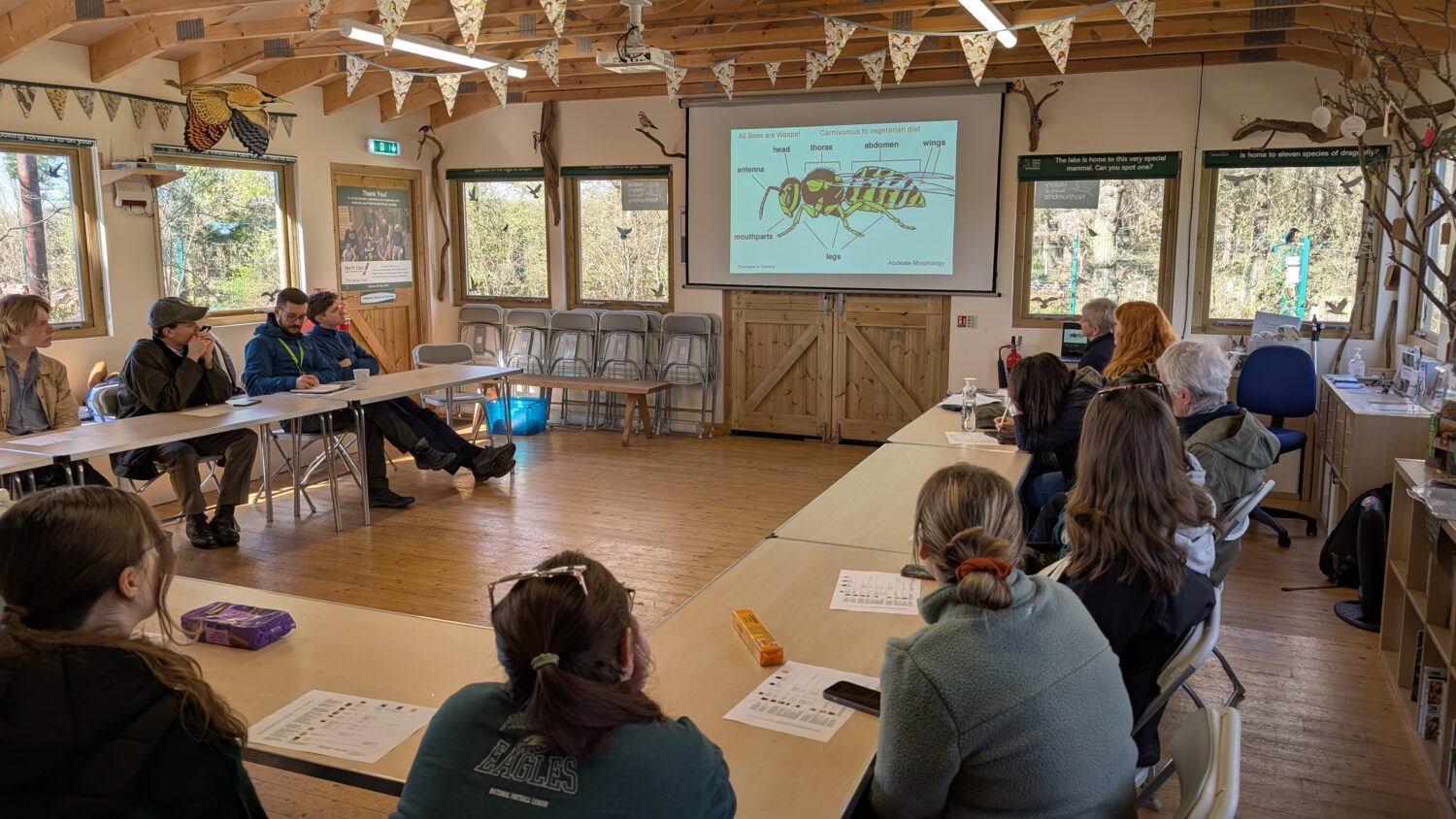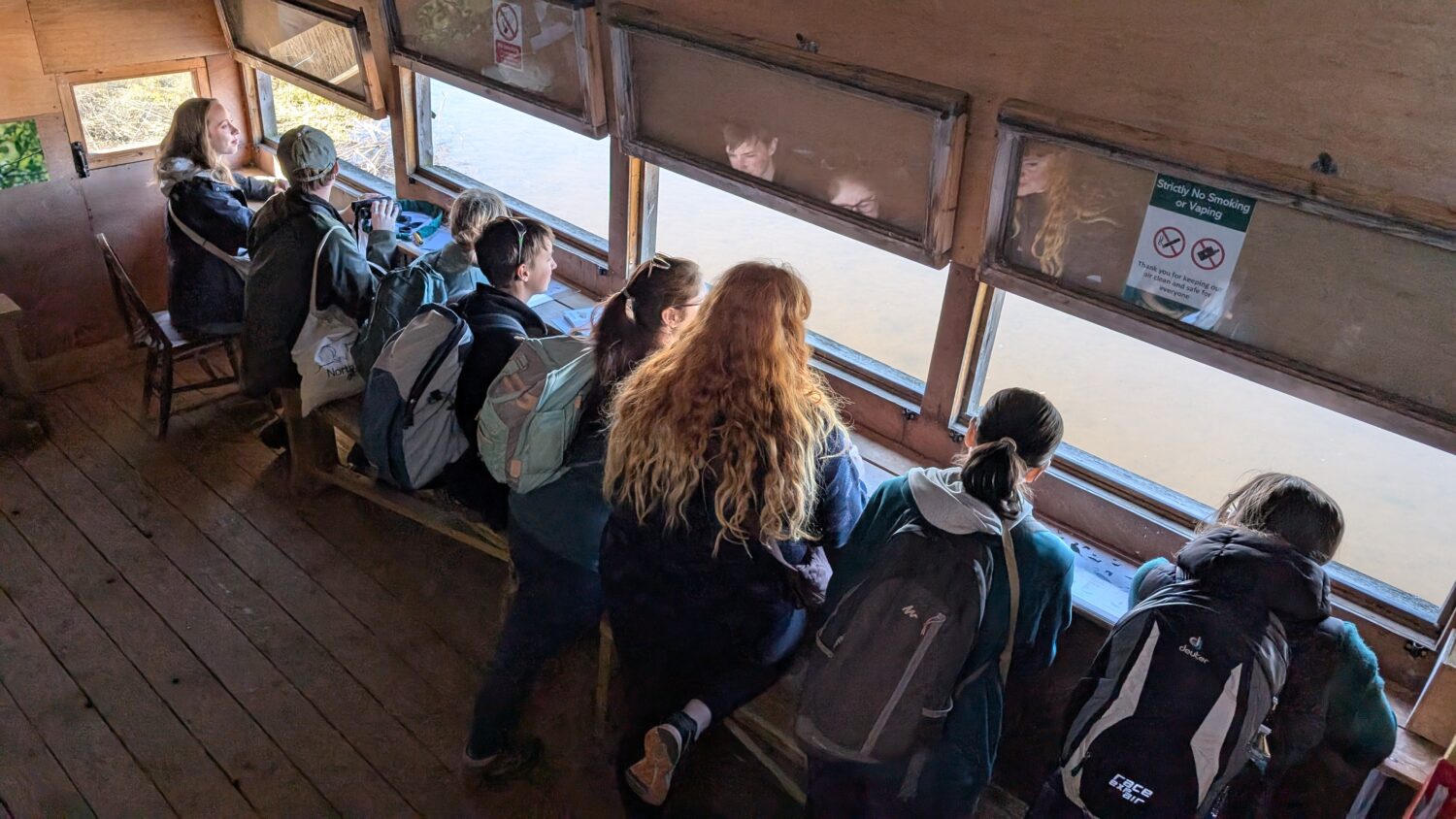NHSN Field Skills participant, Neha Mujumdar, shares a short account of an exciting trip to Gosforth Nature Reserve
With support from Reece Foundation, NHSN recently launched the 2025 Field Skills Programme with the aim to nurture and equip early-career environmentalists with necessary field and identification skills. Young naturalists will gain knowledge on natural history and field identification techniques on various taxa from the experts of respective fields through field trips around Newcastle city. Bees, ladybird beetles, and orchids are the focal groups covered under the programme along with plants and other invertebrates.
After an exciting launch and induction on 22 March, the first trip of the programme took place on 6 April with an ‘Introduction to Wildlife Recording’ at Gosforth Nature Reserve. After a brief introduction of the day’s events by NHSN Senior Naturalist, James Common, the session on the chosen topic was discussed by the Urban Naturalist, Ellie Davison. Ellie provided insights on the importance of wildlife recording following the use of different data portals or apps like iRecord and iNaturalist and explained how these biodiversity data portals help to record wildlife sightings by citizens.
It is easy to upload your sightings of different taxa by creating a profile and joining the specific projects where experts can confirm their records. NHSN’s projects like Gosforth’s Wild Web, The North East Bee Hunt and The North East Ladybird Spot are active on these portals and have gathered hundreds of observations in North East England. These observations are useful to understand the presence and distribution of various species in the region. The curated and verified data can be further used to support research at local and national levels.
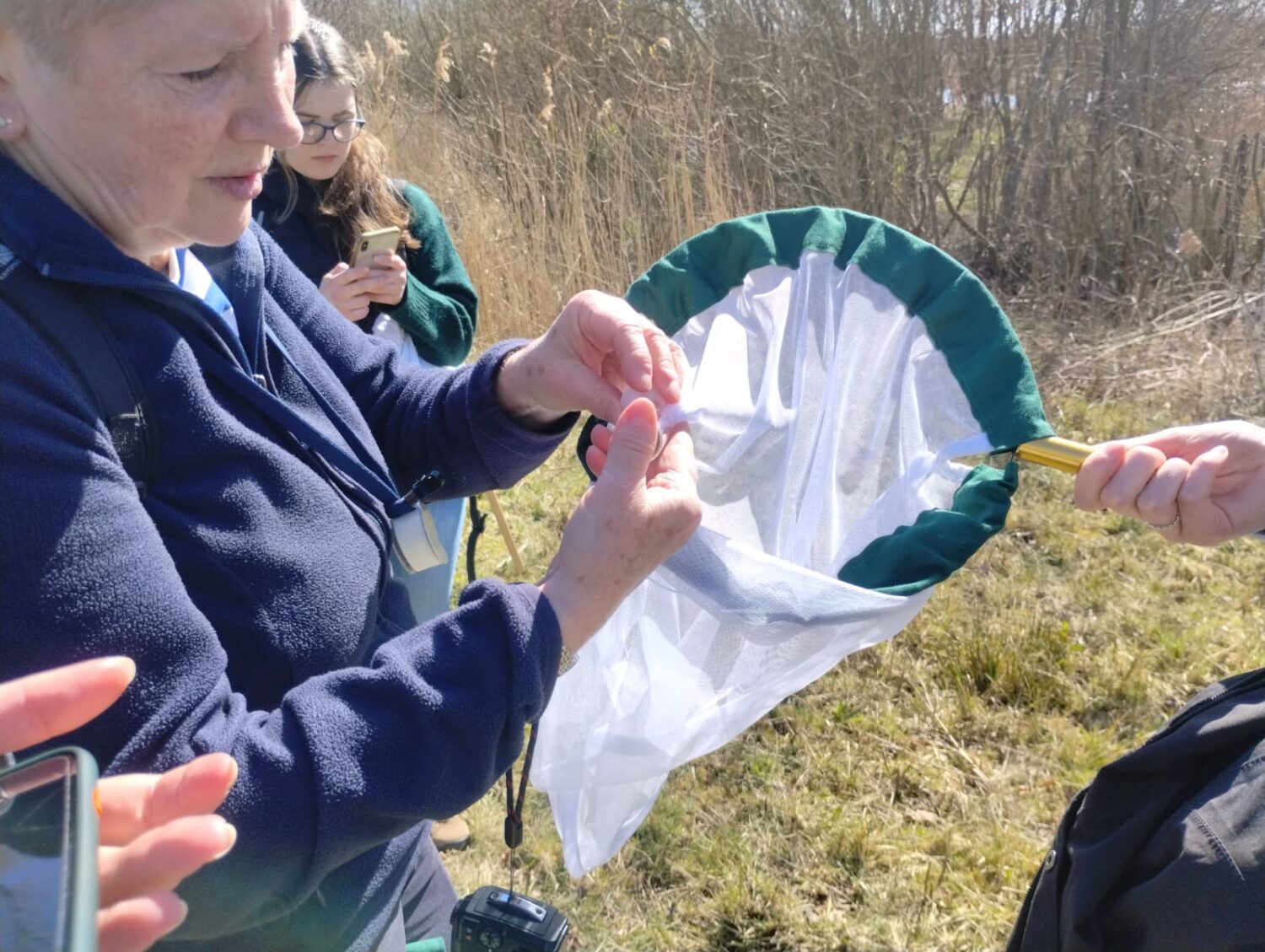
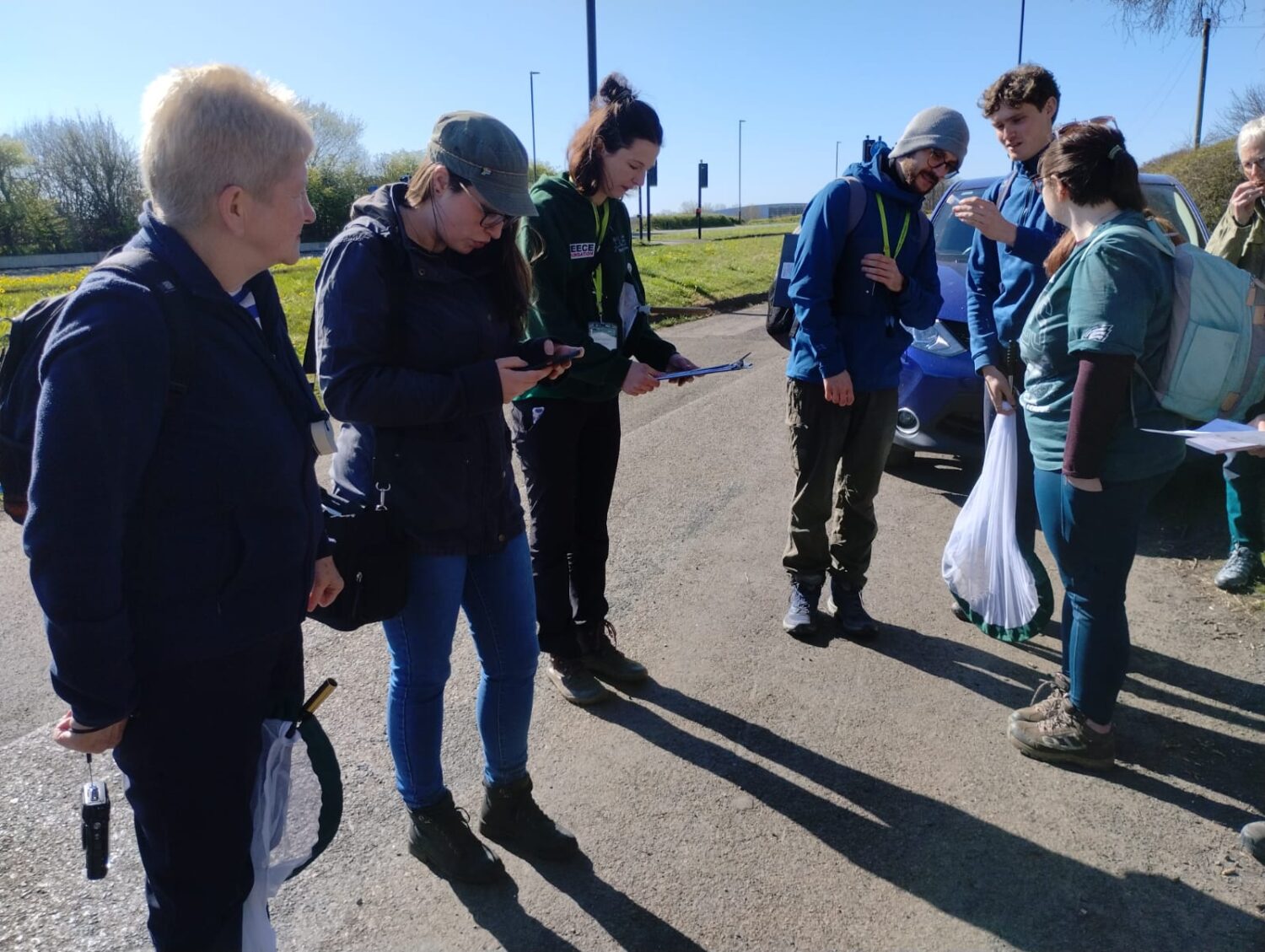
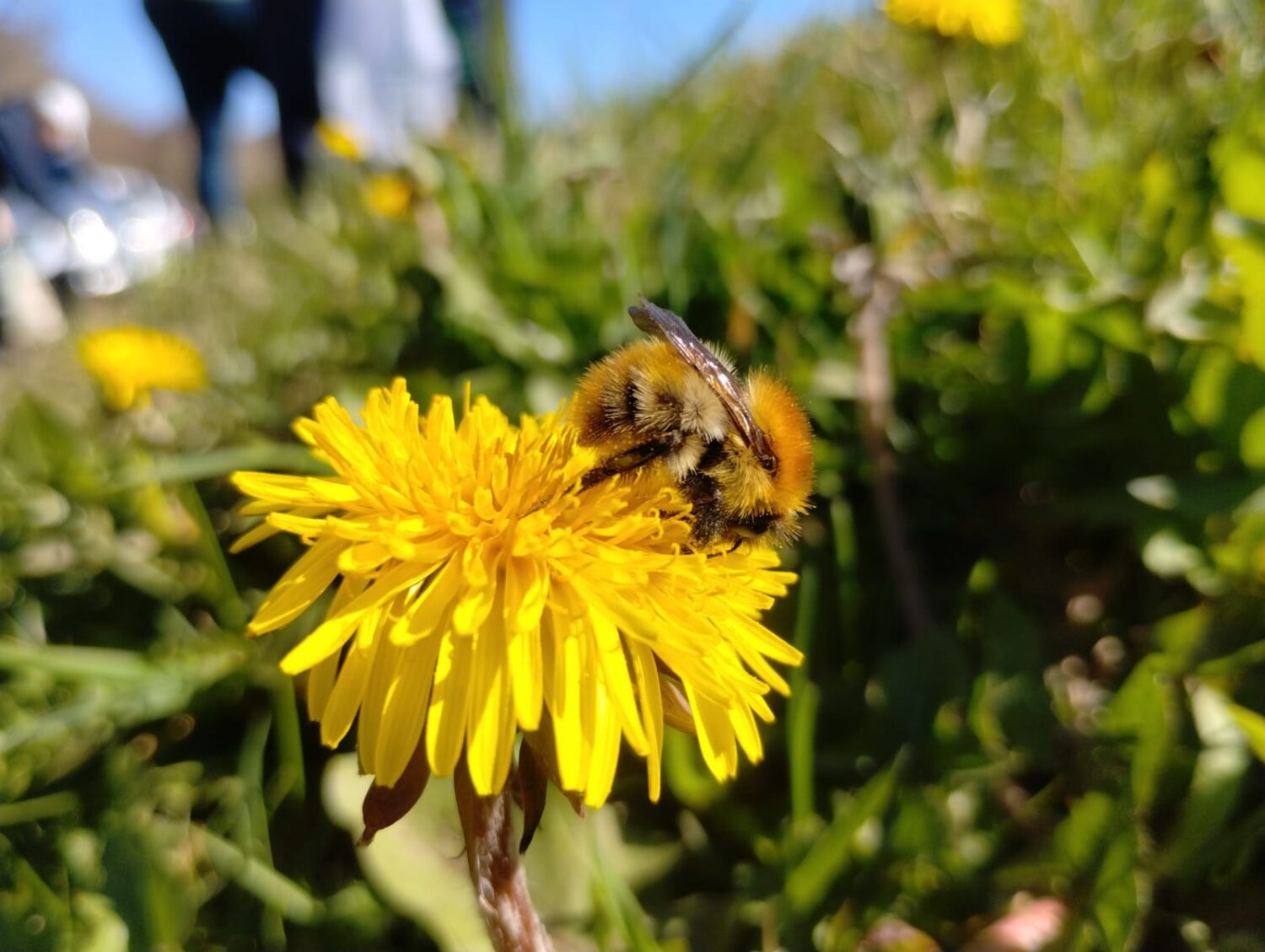
This session was followed by introduction to Bees by the entomologist, Louise Hislop, where we learned about bumblebees and their parasites, the cuckoo bumblebees; their life cycle, and how different they are from wasps and honeybees. After this general introduction, we went out to in the reserve to locate and identify different bees. It was a lovely sunny weather with a lot of activity of invertebrates! It was fun to wander around looking for and trying to catch bees in the insect nets. We were also provided identification keys to determine the species.
First, we encountered a single Common Carder Bee among the flowers just outside the reserve. This beautiful bee having ginger-buff was caught and carefully transferred in the pot by Louise for a closer look. We then went on the Reedbed trail into the reserve afterwards to find a Drone Fly, queen Buff-tailed Bumblebee and enjoyed some wetland birdwatching from one of the hides.
While strolling further along the Meadow trail, we found solitary mining bees (Andrena spp.) such as Tawny, Chocolate, Buffish, and Early Mining Bees. Along with the bees we also saw midges, other smaller flies and butterflies such as Comma, Small White and Peacock.
This was a fabulous start for the season’s first trip that created a buzz in our curious minds. Our next trip will dwell majorly with the bees in Jesmond Dene…keep looking this space for more exciting updates!
